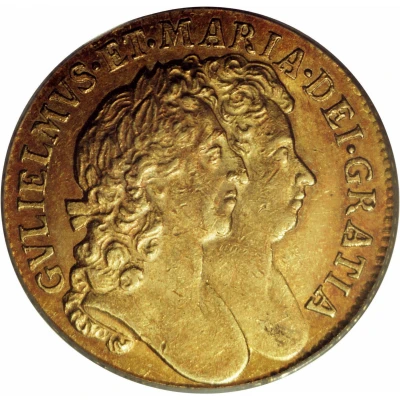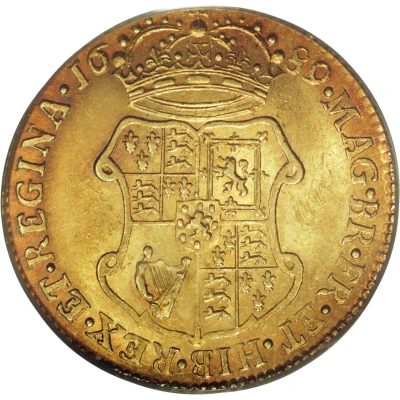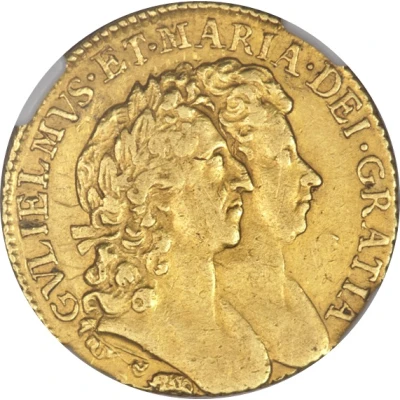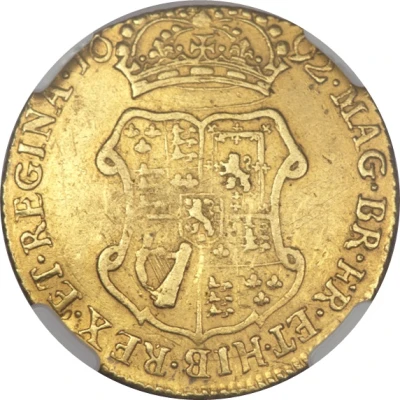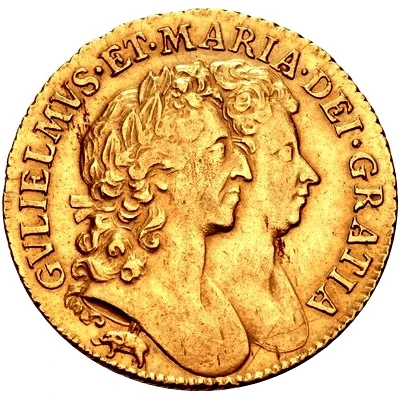
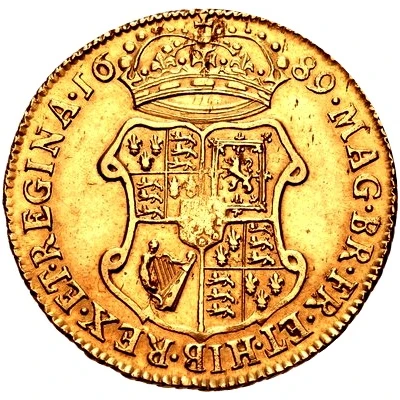

© Classical Numismatic Group, Inc.
1 Guinea - William and Mary
| Gold (.917) | 8.39 g | 25.5 mm |
| Issuer | England (United Kingdom, British Overseas Territories and Crown Dependencies) |
|---|---|
| Ruling authority | William III, Mary II (1689-1694) |
| Type | Standard circulation coin |
| Years | 1689-1694 |
| Value | 1 Guinea (43⁄40) |
| Currency | Pound sterling (1158-1970) |
| Composition | Gold (.917) |
| Weight | 8.39 g |
| Diameter | 25.5 mm |
| Shape | Round |
| Technique | Milled |
| Orientation | Coin alignment ↑↓ |
| Demonetized | Yes |
| Updated | 2024-10-09 |
| Numista | N#130272 |
|---|---|
| Rarity index | 95% |
Reverse
Crowned quartered shield of arms with central Nassau lion, divided date above, legend around.
Script: Latin
Lettering: MAG·BR·FR·ET·HIB·REX·ET·REGINA·16 89·
Translation: King and Queen of Great Britain France and Ireland
Engravers: James Roettier, Norbert Roettier
Edge
Milled
Comment
The guinea was a gold coin that was minted in Great Britain between 1663 and 1814. The name came from the Guinea region in West Africa, where much of the gold used to make the coins originated. They were struck at 44½ to the pound troy, giving a standard weight of 24/89 troy ounce (129.4 grains).Obverse varieties exist with either no mark (Sp#3426) or only elephant (Sp#3428) below the conjoined busts.
Interesting fact
One interesting fact about the 1 Guinea coin from William and Mary's reign is that it was the first English coin to feature the value of the coin, "1 Guinea," on the reverse side, rather than the obverse. This design change was made to prevent counterfeiting and to make it easier for people to recognize the coin's value.
